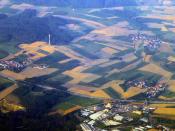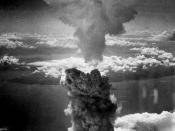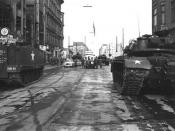On the April 25th 1945 a symbolic meeting between American and Soviet soldiers took place on the River Elbe at Torgau, Germany. Through handshakes and drinks they celebrated their common victory over Nazi Germany, but ultimately their lack of communication and misunderstandings of each other was going to be an ongoing problem into the future.
History has shown us that in the past that once the common fight is over Wartime Coalitions always seem to break up, and the Grand Alliance was to be no different. However, unlike previous similar situations (World War I for example), no post-war treaty of peace was ever constructed, and no meeting ever held.
Ultimately The Cold War was a struggle between conflicting Ideas, Governments and Values, and the Western fear of communism spreading and democracy dying. In the West, specifically the United States the Capitalist system was king, with the concepts of a market economy and a democratic government was considered necessary parts of their way of life.
In the Eastern USSR however, an autocratic leader and the concept of equality in class and wealth were highly valued. This obvious conflict of ideas and values were one of the driving forces behind Cold War.
The nature of the cold war was the opposite of that to a normal war, weapons were never fired, and the war was more of an extensive show of propaganda, or a war of words than it ever was a typical war. Although weapons were never fired, this period of time had several huge conflicts that brought the world to the brink of Nuclear War, and huge political discontent between the East and the West.
Early in 1945 it had become apparent to the Coalition that Germany's defeat was now inevitable, and so the Yalta Conference was held in February.


